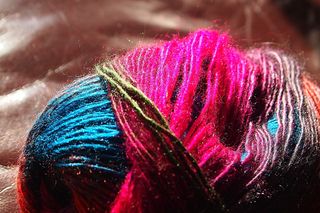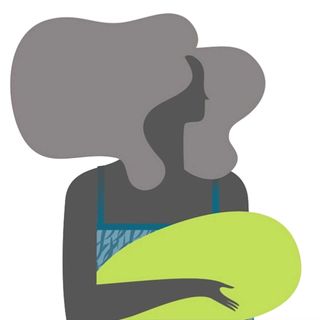
An Ancient, Female Handicraft Is Making Waves in Modern STEM Education
There’s a growing call to respect the mathematics of knitting — and to teach it to kids.

Knitting isn’t just a pastime for elderly aunties anymore. The 3,000-year-old handicraft is finding new life as a method of teaching maths. Knitting (and its related crafts, like crochet) is the new coding — that is, the must-do activity to build children’s computational skills and to set them up for a career in STEM fields.
“I noticed that knitting instructions are largely binary (like computers) — in other words, knit or purl,” Karen Shoop, PhD, an electrical engineering professor at Queen Mary University in London, told education publication KQED, describing her first knitting lesson. “More interesting were the knitting instructions, which read just like regular expressions [of code], used for string matching and manipulation when coding.”
Shoop was moved to write an essay, “Knitters and Coders: Separated at Birth?” in which she lays out the similarities of and, ease of translation between, a knitting pattern and a line of code.
Shoop isn’t alone. Sara Jensen, PhD, an assistant professor of mathematics at Carthage College in Wisconsin, U.S., uses knitting to introduce advanced maths concepts like abstract algebra and topology to junior and senior maths majors; Melissa Sommerfeld Gresalfi, PhD, runs the KnitLab at Vanderbilt University in Tennessee, U.S., where she studies, among other things, whether knitting can be used to teach maths effectively to middle school students. It’s a new area of research, but her studies and others’ suggest it can. A more established body of research suggests that learning concepts through manual activities, builds thinking skills, computational and otherwise.
Related on The Swaddle:
Coding for Kids: Is It as Critical as Everyone Says?
The result is a reclamation, of sorts, of a homely, disdained female pastime, and through it, an assertion of space within male-dominated STEM fields. Amid findings that maths anxiety is highest among girls, and reports detailing the machismo of STEM fields that partially drive their wide gender gap, appreciation for knitting’s complex underpinnings comes at an important time. In fact, knitting is at the forefront of a push to broaden STEM into a movement called STEAM, which seeks to integrate the Arts — traditionally a subject considered less difficult and therefore more suitable for female students — into Science, Technology, Engineering and Maths education.
“Craft and science are now crashing together — wearable tech has helped a lot. You can go from coding to sewing and rewiring in a single project,” Kate Mulcahy, a Makerspace Programme Coordinator at Imperial College London, told The Telegraph. Even electronics education sites aimed at hobbyists offer circuits that can be sewn into textiles, conductive fibers for textile-making, and sewing patterns that incorporate both. On a professional level, the result, say STEAM advocates, are better, more useful products that harness the function of STEM with the applied creativity and beauty of art. “Engineers focus on how it works,” Jenni Buckley, an assistant professor of mechanical engineering at the University of Delaware, told the New York Times. “Artists focus on the user experience.”
Nowhere is this fusion more clear than in new-wave materials science, which is rediscovering knitting in order to advance cutting-edge technology.
At the Georgia Institute of Technology in Atlanta, U.S., Elisabetta Matsumoto, PhD, an assistant professor in the School of Physics, runs a lab that attempts to catalog the mathematics of knot theory that underpin each kind of knit pattern, essentially translating stitches into mathematical models that also take into account a knitted material’s properties. The research promises to affect everything from spacesuit design, to human ligament repair, to video game graphics, to workout gear; smart clothing that uses knitting to maximize textile conductivity is already in development.
“I realized that there is just a huge amount of math and materials science that goes into textiles, but that is taken for granted an awful lot,” Matsumoto has said.
Perhaps not anymore. Knitting, it seems, is at last getting its mathematical due.
Liesl Goecker is The Swaddle's managing editor.
Related


Indian Women Are Paid 34% Less Than Male Peers, Oxfam Reports
